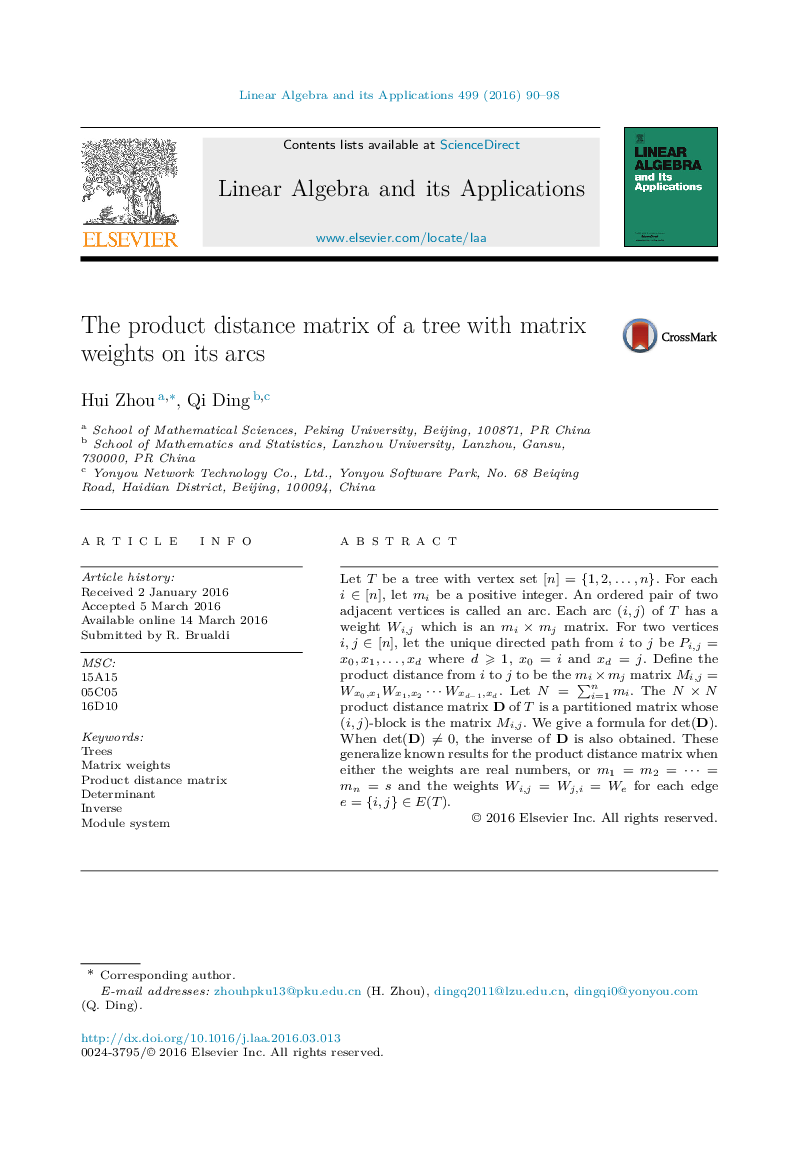| Article ID | Journal | Published Year | Pages | File Type |
|---|---|---|---|---|
| 4598672 | Linear Algebra and its Applications | 2016 | 9 Pages |
Let T be a tree with vertex set [n]={1,2,…,n}[n]={1,2,…,n}. For each i∈[n]i∈[n], let mimi be a positive integer. An ordered pair of two adjacent vertices is called an arc. Each arc (i,j)(i,j) of T has a weight Wi,jWi,j which is an mi×mjmi×mj matrix. For two vertices i,j∈[n]i,j∈[n], let the unique directed path from i to j be Pi,j=x0,x1,…,xdPi,j=x0,x1,…,xd where d⩾1d⩾1, x0=ix0=i and xd=jxd=j. Define the product distance from i to j to be the mi×mjmi×mj matrix Mi,j=Wx0,x1Wx1,x2⋯Wxd−1,xdMi,j=Wx0,x1Wx1,x2⋯Wxd−1,xd. Let N=∑i=1nmi. The N×NN×N product distance matrix D of T is a partitioned matrix whose (i,j)(i,j)-block is the matrix Mi,jMi,j. We give a formula for det(D)det(D). When det(D)≠0det(D)≠0, the inverse of D is also obtained. These generalize known results for the product distance matrix when either the weights are real numbers, or m1=m2=⋯=mn=sm1=m2=⋯=mn=s and the weights Wi,j=Wj,i=WeWi,j=Wj,i=We for each edge e={i,j}∈E(T)e={i,j}∈E(T).
